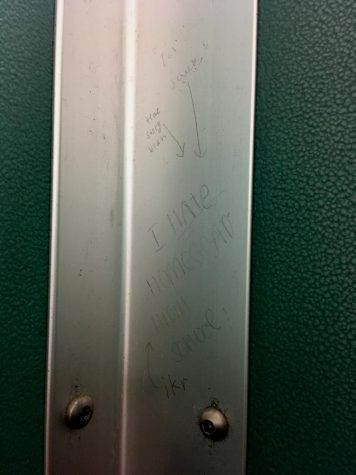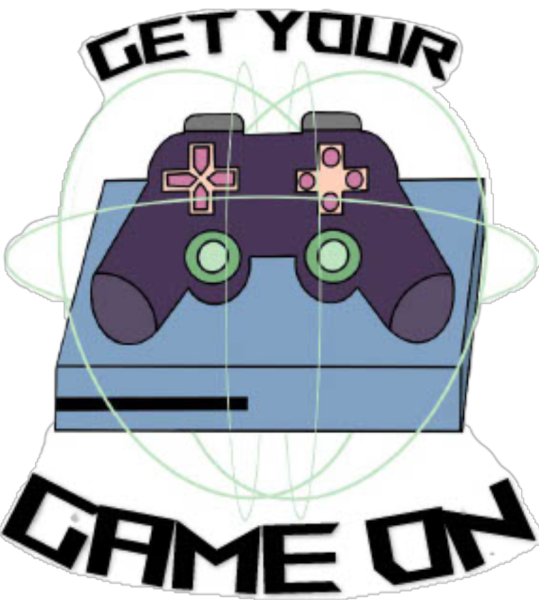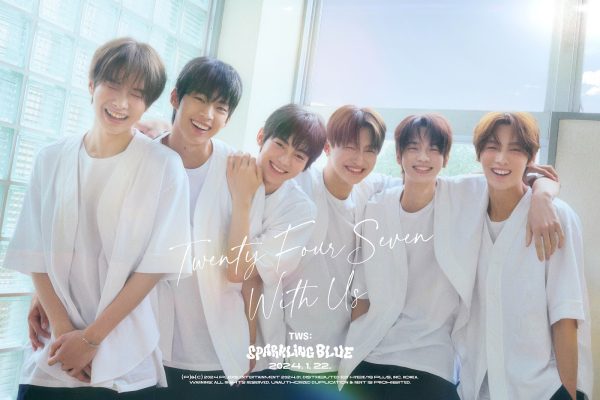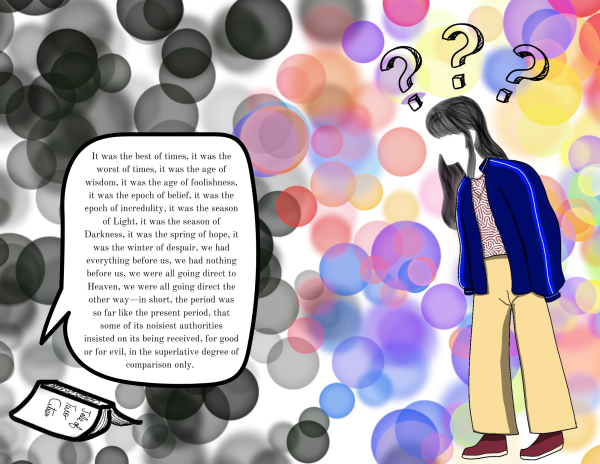Pad Reputation
Artwork outside the Girl’s Bathroom confronts the shame and censorship surrounding menstruation
A found-art piece on the door of the Lower B building girl’s bathroom, entitled “Women,” boldly addresses the stigma surrounding menstruation.
Just as the the female figure typically depicted on restroom sign is completely obscured by a pad in “Women”, women who menstruate are often overlooked due to their biology. Society tells women to cover their periods up.
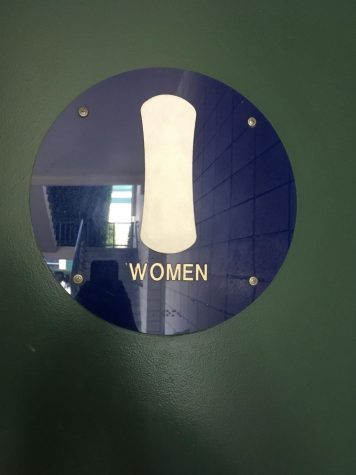
The stark juxtaposition of a sanitary napkin over the word “WOMEN” in the artwork questions American cultures’ pad problem. Menstruation is all too often treated as a “girl thing.” Periods are for women, so women deal with them. Where soap, toilet paper and other lavatory supplies are provided for free in public restrooms. Menstruators are forced to pay for their biology. Viagra is exempt from taxation, but feminine hygiene products are taxed in 42 states.
Admittedly other necessities like band-aids, toilet paper and soap are taxed. However, such products are needed by everyone. Only people who menstruate pay for pads — garnering California alone $20 million dollars annually.
“The cost of pads has risen so much that this piece alone cost has been appraised at $5 million,” artist Frieda Flo said.
However, Flo’s artwork has met with some resistance.
“I just don’t get what the big deal is, women should just man up and bleed everywhere if they don’t want to pay for their periods.” protester Manny Menostrate said.
Members of the Meninist community have even gone so far as to call Flo’s artwork sexist.
“If we didn’t tax tampons, girls would just run around sticking pads all over the place. This artwork proves it!” Meninist representative, Guy Nopad said.
However, despite protests, Flo’s art strikes hard at an oft under-discussed issue. Although, on initial appraisal, her piece, seems as simple as a pad stuck to a high school girl’s bathroom, “Women” is one of the most influential feminist artworks of this century. Fearlessly, it symbolizes women’s struggle to overcome patronizing stereotypes gender types.
“Women” speaks boldly on female biology. The simple found-art piece places the pad — usually a subject of shame and secrecy — in honest view. In doing so, “Women” tears a rift in the way periods our treated, and sparks hope for a brighter future.








